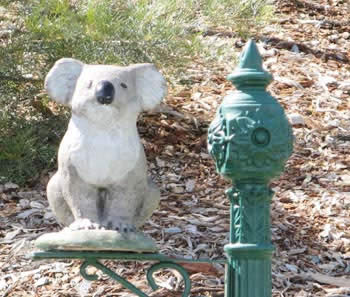
WINTER
EDITION 2009
 |
|
|
A
Springsure Creek koala in the heat of the day – one of three found
during the survey |
This was in both private land and national park. The changes were natural (not associated with land use practices) and are due to either long term cyclical fluctuations in regional rainfall or the impact of climate change. Whatever the case, the collapse in this population is particularly important as Springsure has been associated with koalas since the early 20th Century and subject to scientific research since the 1980’s (Dr Greg Gordon 1980’s, Dr Alistair Melzer 1990 – 2009, Dr William Ellis and Professor Frank Carrick 1990’s). Indeed it is one of the longest studied populations in Australia. It
is so depressing, but there is some hope. A low density widespread
population of koalas persists, and if the forest red gum community
can recover then perhaps the koala population can increase. Alternatively,
if the drought conditions are the “new normal” then the persistent
koalas will have to adapt to a more arid or unpredictable environment.
A good model for the latter situation can be seen in the koalas
living west of the Great Dividing Range where koalas live as widespread,
low density populations. A special thanks to the property owners who have allowed the research team to use their properties and to the regional council, Queensland Parks and Wildlife, Conservation Volunteers Australia and Xstrata Coal for their participation and support. A Springsure Creek koala in the heat of the day – one of three found during the survey. |
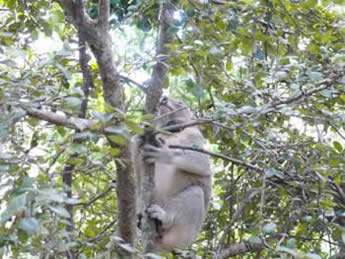 |
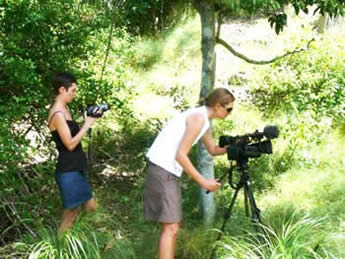 |
| A
Brampton Island koala in a rainforest shrub |
Natural history photographers Susan and Sharon filming on St Bees
Island |
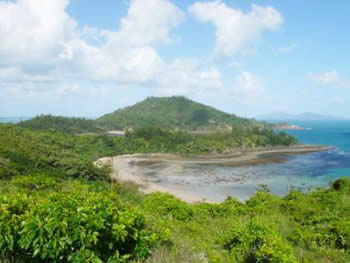 |
 |
Brampton
Island landscape with St Bees Island in the background |
Dr
Bill Ellis recording tree use data on Brampton Island |
| St
Bees Island July Field trip I visited St Bees Island for 10 days from the 14 July. This was a trip that was not focused on collecting koala data – for once. Rather, I was servicing the weather stations and data loggers scattered across the island. Of course I did take time to look at a few koalas along the way. Below is a young koala in a poplar gum (Eucalyptus platyphylla). There was quite a bit of evidence of koalas eating the poplar gum and I collected some koala faecal pellets to see if this species was really being eaten in any significant amount. |
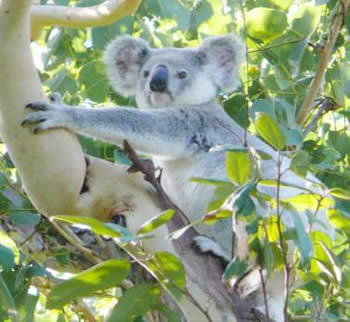 |
|
|
Nearly three thousand goats have been removed from the island. The good news is that recovery of grass, trees and shrubs within the goat exclosures is evident, and recovery of the grass cover is quite evident across the west coast of the island. What is particularly exciting is our discovery of a seedling of Blue Gum (Eucalyptus tereticornis) and abundant seedlings of beach casuarinas (Causuarina equisetifolia) and forest casuarina (Allocasuarina littoralis). These are the first I have seen since first coming to the island in the late 1990’s. So there is hope that the goat cull will lead to an emergence of a young generation of the koala’s primary food species and to the restoration of the native grassland. Goats remain across the island but in small groups. It is expected that the removal of the last goats will take quite a few years. The swamp wallabies are also a target for management as they also browse a wide range of native tree and shrub seedlings and saplings. Attention to these introduced wallabies is expected to increase soon. The Queensland Herbarium team consisted of a single person (Janette Kemp) who is developing a vegetation map of the island at the request of Queensland Parks and Wildlife Service. |
 |
|
|
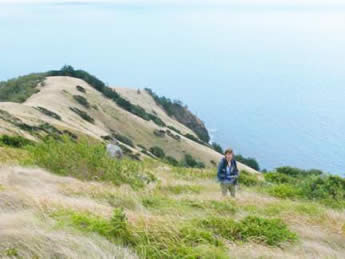 |
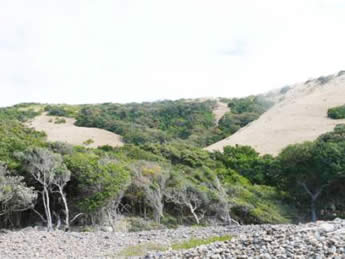 |
This trek took us across that part of the island where the remnant of the island cattle still grazed. We saw no evidence of cattle activity and it seems that they may have perished during the 2003 drought. Interestingly, we saw no evidence of the whiptail wallaby during the surveys. These animals are usually encountered on the southern parts of the island. Have they died out in the dry conditions when fodder was reduced by goat overgrazing? The team from San Diego’s CRES and QUT consisted of Bill Ellis (and his daughter Grace) with Paul and Juro from QUT. They were servicing the equipment used to remotely monitor koala calling. These units are set up at three sites around Homestead Bay and Honeymoon Bay and send recorded calls to Bill’s computer in Brisbane. |
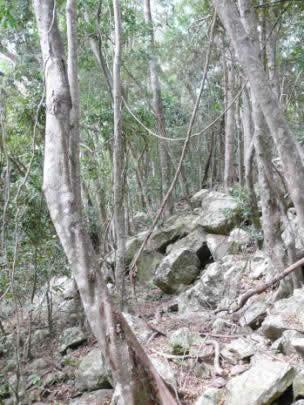 |
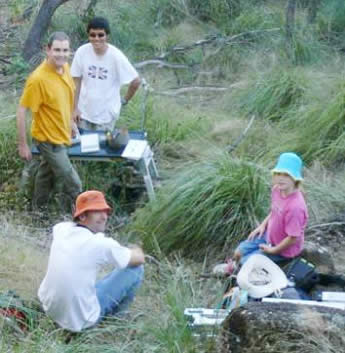 |
Spring had arrived early on the island. Koalas were calling from early afternoon and male-female encounters could be heard during the night and early morning. The birds were also showing signs of mating activity and the pheasant coucals were actively calling – creating a sense of summer rather than winter. Finally, to remind us that it really was July, whales were active off the island throughout the trip, with lots of leaping, tail and fin slapping as well as business-like cruising southwards. The QPWS team were delayed in their arrival as they had to stop to allow a large pod of whales pass by. The next visit to St Bees Island is in October where the focus will be back on koala activity. Alistair Melzer |
|
We
expect to spend a considerable amount on expeditions in 2009 and
due to the financial downturn, funds raised from interest and Koala
Chocolates will be well down. |
